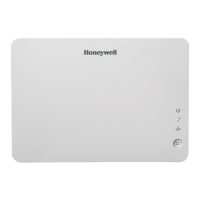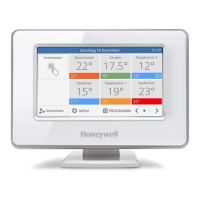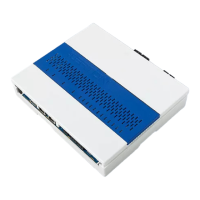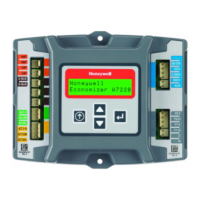ENGINEERING MANUAL OF AUTOMATION CONTROL
ELECTRONIC CONTROL FUNDAMENTALS
125
Thermocouples
A thermocouple, consists of two dissimilar metals, such as
iron and constantan, welded together to form a two thermocouple
junctions (Fig. 7). Temperature differences at the junctions causes
a voltage, in the millivolt range, which can be measured by the
input circuits of an electronic controller. By holding one junction
at a known temperature (reference junction) and measuring the
voltage, the temperature at the sensing junction can be deduced.
The voltage generated is directly proportional to the temperature
difference (Fig. 8). At room temperatures for typical HVAC
applications, these voltage levels are often too small to be used,
but are more usable at higher temperatures of 200 to 1600F.
Consequently, thermocouples are most common in high-
temperature process applications.
TEMPERATURE (F)
OUTPUT (mV)
0
10
20
30
40
50
0 200 400 600 800 1000 1200 1400
C3079
Fig. 7. Basic Thermocouple Circuit.
Fig. 8. Voltage vs Temperature for
Iron-Constantan Thermocouple.
Transmitter/Transducer
The input cir cuits for man y electr onic contr ollers can acce pt
a voltage range of 0 to 10V dc or a cur rent r ange of 4 to 20 mA.
The inputs to these contr ollers ar e classified as uni versal inputs
because the y accept an y sensor ha ving the cor rect output. These
sensors are often referred to as transmitters as their outputs are
an amplif ied or conditioned signal. The pr imar y requir ement
of these tr ansmitter s is tha t the y pr oduce the r equir ed voltage
or cur rent level for an input to a contr oller over the desir ed
sensing range.
Transmitters measure various conditions such as
temperature, relative humidity, airflow, water flow, power
consumption, air velocity, and light intensity. An example of a
transmitter would be a sensor that measures the level of carbon
dioxide (CO
2
) in the return air of an air handling unit. The
sensor provides a 4 to 20 mA signal to a controller input which
can then modulate outdoor/exhaust dampers to maintain
acceptable air quality levels. Since electronic controllers are
capable of handling voltage, amperage, or resistance inputs,
temperature transmitters are not usually used as controller
inputs within the ranges of HVAC systems due to their high
cost and added complexity.
RELATIVE HUMIDITY SENSOR
Va rious sensing methods are used to determine the percentage
of relative humidity, including the measurement of changes of
resistance, capacitance, impedance, and frequency.
Resistance Relative Humidity Sensor
An older method that used resistance to determine relative
humidity depended on a layer of hygroscopic salt, such as
lithium chloride or carbon powder, deposited between two
electrodes (Fig. 9). Both materials absorb and release moisture
as a function of the relative humidity, causing a change in
resistance of the sensor. An electronic controller connected to
this sensor detects the changes in resistance which it can use to
provide control of relative humidity.
Fig. 9. Resistive Type Relative Humidity Sensor.
Capacitance Relative Humidity Sensor
A method that uses changes in capacitance to determine
relative humidity measures the capacitance between two
conductive plates separated by a moisture sensitive material
such as polymer plastic (Fig. 10A). As the material absorbs
water, the capacitance between the plates decreases and the
change can be detected by an electronic circuit. To overcome
any hindrance of the material’s ability to absorb and release
moisture, the two plates and their electric leadwires can be
on one side of the polymer plastic and a third sheet of
extremely thin conductive material on the other side of the
polymer plastic form the capacitor (Fig. 10B). This third plate,
too thin for attachment of leadwires, allows moisture to
penetrate and be absorbed by the polymer thus increasing
sensitivity and response.
C3099
THIN, GOLD ELECTRODES
NONCONDUCTIVE BASE
LAYER OF CONDUCTIVE
HYGROSCOPIC SALT
WIRES TO
CONTROLLER
INPUT LOAD
OF SENSING
CIRCUIT
ENLARGED VIEW OF THERMOCOUPLE
SENSING JUNCTION
DISSIMILAR METALS
ELECTRONIC
CONTROLLER
REFERENCE
JUNCTION
C3090
SENSING
JUNCTION

